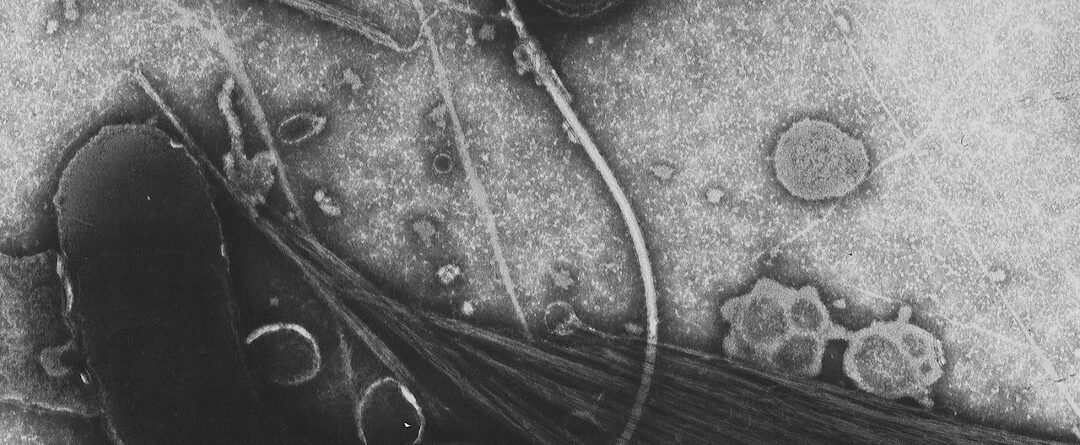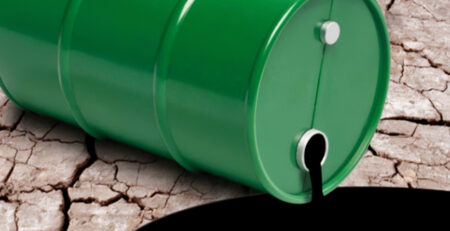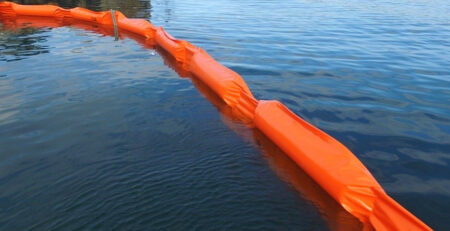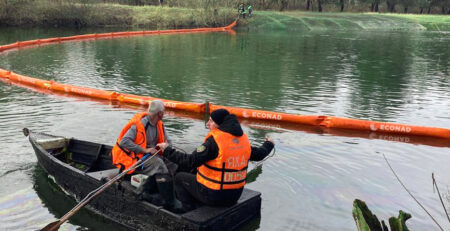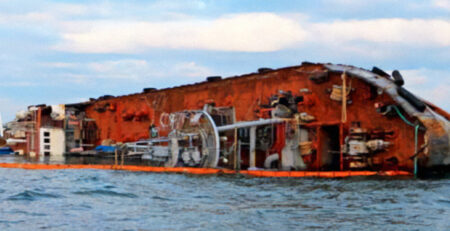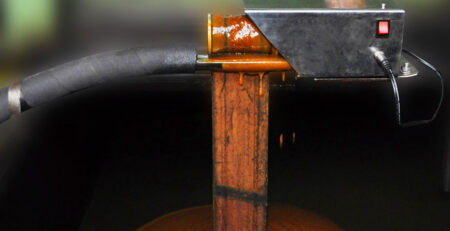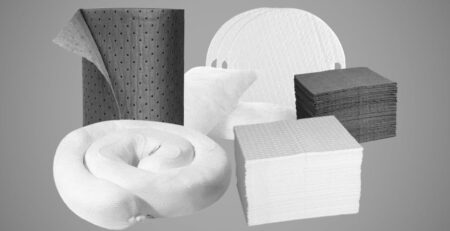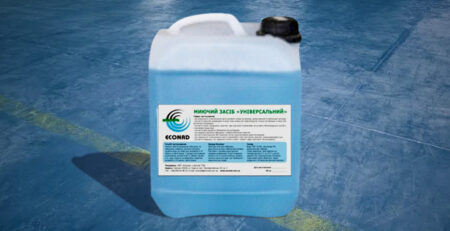Cholera vibrios and their relationships with Pseudomonas Fluorescens strains used for conservation purposes
Soloviev V.I.
Pushkina V.A.
Kozhanova G.A., Gudzenko T.V.
Rudenko A.V., Samoilenko V.A.
The need to study the relationship of various types of microorganisms with cholera vibrios is associated with the solution of a number of problems:
- creation of live bacterial preparations for the prevention and treatment of cholera, in connection with the global increase in polyantibiotic-resistant strains of the pathogen [1];
- Conducting environmental studies aimed at addressing the issue of the possible endemicity of cholera foci primarily associated with natural water bodies. Analysis of biotic and abiotic factors affecting the biological properties and survival of cholera vibrios in aquatic communities [2].
The relevance of studying the vital activity of vibrios in aquatic ecosystems is due to the importance of the water factor in the spread of infection. The water route of cholera spread in Ukraine was the main one during the outbreaks of 1970, 1977, 1991, 1994, 1995 [1]. Experimental studies in recent years have shown that vibrios survive better in brackish water than in fresh water, tk. the presence of sodium ions is a prerequisite for their growth. According to the Ministry of Health of Ukraine in 1998, out of 811 samples of sea water, 260 vibrios were isolated not from the O1 group (32.1%), but from 142 samples of river water – 3 (2.11%). During the peak of the cholera outbreak in Odessa in 1970, 70.7% of illnesses were associated with bathing in seawater contaminated by untreated city sewerage [3].
It should be noted that the anthropogenic load on water bodies can be accompanied by the intensive development of pathogenic and opportunistic microorganisms, due to the violation of the ecological microsystem of natural biocenoses [4]. In sea water, to a greater extent than in fresh water, the antagonistic effect of microflora is expressed. Grigorieva L.V. cites the data of a number of authors on the antagonistic effect of marine bacteria strains on staphylococci, Escherichia coli, yeast-like fungi, and other microorganisms [5]. In this regard, the study of the restoration of the self-purifying ability of sea water, including in relation to microbial pollution, undoubtedly requires the attention of ecologists, microbiologists, and other specialists. In recent years, preparations of microorganisms-biodestructors have been widely used to combat oil pollution of water bodies, which include monocultures or associations of more than 20 types of oil-oxidizing microorganisms, the concentration of which in working solutions is quite high – 105–106 microbial cells per ml [6]. Water bodies traditionally polluted with oil products include port waters and areas adjacent to large industrial centers. In the conditions of Odessa, these same zones are objects of pollution by sewage. In this regard, we set the task to study the effect of Pseudomonas strains, which are part of the Econadin preparation, a biodestructor of petroleum hydrocarbons, on V. cholerae.
We used 8 strains of cholera vibrios from the Museum of Bacterial Cultures of the UkrNIPCh. Including 1 strain of cholera vibrios cholerae 569B, a reference producer of cholera exotoxin, 6 strains of cholera vibrios eltor isolated from patients during the cholera outbreak of 1994-1995, and 1 strain of cholera vibrios non OI isolated from sea water. All strains were typical in their morphological, cultural and biochemical properties. Pseudomonas fluorescens strains, destructors of oil hydrocarbons, which are part of the Econadin preparation, were isolated from natural econiches (ocean environment). Bacteria have been comprehensively tested for the absence of pathogenic and invasive properties; harmless to humans, animals and hydrobionts, do not have potential genetic activity.
Considering that under natural conditions the interaction of microorganisms can occur both at the “colonial” level and at the level of individual cells, the study of the associative model “vibrio-pseudomonas” was carried out on liquid and solid nutrient media. In experiments with microbial suspensions, we used the method for determining the antagonistic index according to the Nissle method modified by L. G. Peretz and E. M. Slavskaya. Daily broth cultures were diluted with a nutrient medium to 500 million microbial cells per 1 ml according to an optical standard. In test tubes with 4 ml of “experimental” medium, 1 ml of vibrio culture and 0.1 ml of pseudomonad culture were added. In parallel, bacterial growth controls were inoculated at concentrations corresponding to the experiment. In the work of Schiller I.G. the possibility of transition from one type of relationship to another (for example, indifferent to antagonistic) depending on the nutrient medium used was shown [6]. Therefore, antagonism was determined simultaneously on meat-peptone broth (MPB) and sterile sea water. Cultivation was carried out at 37°C and 22°C for 48 hours. After 24 and 48 hours, 1 standard bacteriological loop was sown on alkaline and meat-peptone agar. Then the number of colonies was counted and the antagonistic index was determined (how many vibrio colonies per 100 pseudomonad colonies).
Determination of relationships on solid medium (meat peptone agar) was studied using the method of delayed antagonism according to Frederic at cultivation temperatures of 37°C and 22°C.
On a solid nutrient medium at different cultivation temperatures, all vibrio strains were indifferent to Pseudomonas. On liquid media in all series of experiments, the antagonistic effect of Pseudomonas on strains of Vibrio cholerae cholerae 569B and Vibrio cholerae eltor was revealed to 7 out of 8 strains taken in the experiment. Vibrio growth inhibition of varying degrees was recorded after 24 and 48 hours of cultivation. At the same time, pseudomonads showed the greatest antagonistic activity, up to complete inhibition of growth, in relation to Vibrio cholerae cholerae 569B under all cultivation conditions. In relation to the Vibrio cholerae non O1 strain, no antagonistic effect was found in quantitative terms. However, the appearance of a significant number of colonies of a smaller size relative to the control seedings after 48 hours of co-cultivation was noted. When comparing the average indicators of the antagonistic activity of Pseudomonas on various cultivation media with a reliability of Р 5%, it was found that the lowest indicators were obtained on the BCH after 48 hours; high – on sea water. When the temperature regime was changed from 37С to 22С, a decrease in antagonistic indices (an increase in antagonistic activity) was revealed after 48 hours of cultivation on all media. For 24 hours, this difference was recorded only in sea water, which may be due to the higher growth rate of vibrios. There were no significant differences in the effect of the used strains of Pseudomonas on vibrios.
Thus, new data have been obtained on the relationship of Pseudomonas used for environmental purposes with V. cholerae. The established differences in the relationship between vibrios and pseudomonads in liquid and solid media can also take place in environmental objects, where the interaction of microorganisms occurs, as a rule, in boundary media (at the colonial level and in bacterial suspensions). The presence of substrates for the attachment and reproduction of vibrios at the level of colonies (silt, biomass, etc.) may reduce the antagonistic effect of Pseudomonas. At the same time, Pseudomonas strains in the composition of the preparation are sorbed on the substrate (peat) and can gain an advantage when interacting with vibrio suspensions. The introduction of such strains of Pseudomonas into bacterially contaminated water bodies with high vibriotiter will obviously promote their self-purification. The issue requires further study.
List of references
- Актуальные проблемы холеры / Г. Г. Онищенко, Ю. М. Ломов, В. И. Покровский и др. – М.: ГОУ ВУНМЦ МЗ РФ, 2000. — 383с.
- Литвин В.Ю. Экосистемный пусковой механизм эпидемического проявления сапронозов (на примере холеры) // Журн. Микробиол. – 1996. — № 3. – С. 11- 15.
- Могилевский Л.Я. Факторы и пути передачи холеры Эль Тор В г. Одессе в период вспышки в 1970 году: Дисс. канд. мед. наук. – Одесса, 1974. – 227 с.
- Виноградова Л.А. Индикация биоценоза потенциально патогенных, индикаторных и патогенных бактерий в водных объектах окружающей среды /Методы индикации патогенных и потенциально патогенных микроорганизмов в объектах окружающей среды.- М.: МНИИГ, 1985. – С. 42-53.
- Григорьева Л.В. Санитарная бактериология и вирусология водоемов. — М.: Медицина, 1975.- 192 с.
- Медицинские аспекты и санитарно-гигиеническая оценка бактериальных препаратов, применяемых для борьбы с нефтяным загрязнением водоемов / В.И.Соловьев, В.А. Пушкина, Г.А. Кожанова, Т.В. Гудзенко / Вода и здоровье: Сб. научн.статей.– Одесса: ОЦНТЭИ, 2001. – С. 195-200.
- Шиллер И.Г. Направленный антагонизм микробов. – Киев.- 1952. – 86 с.

